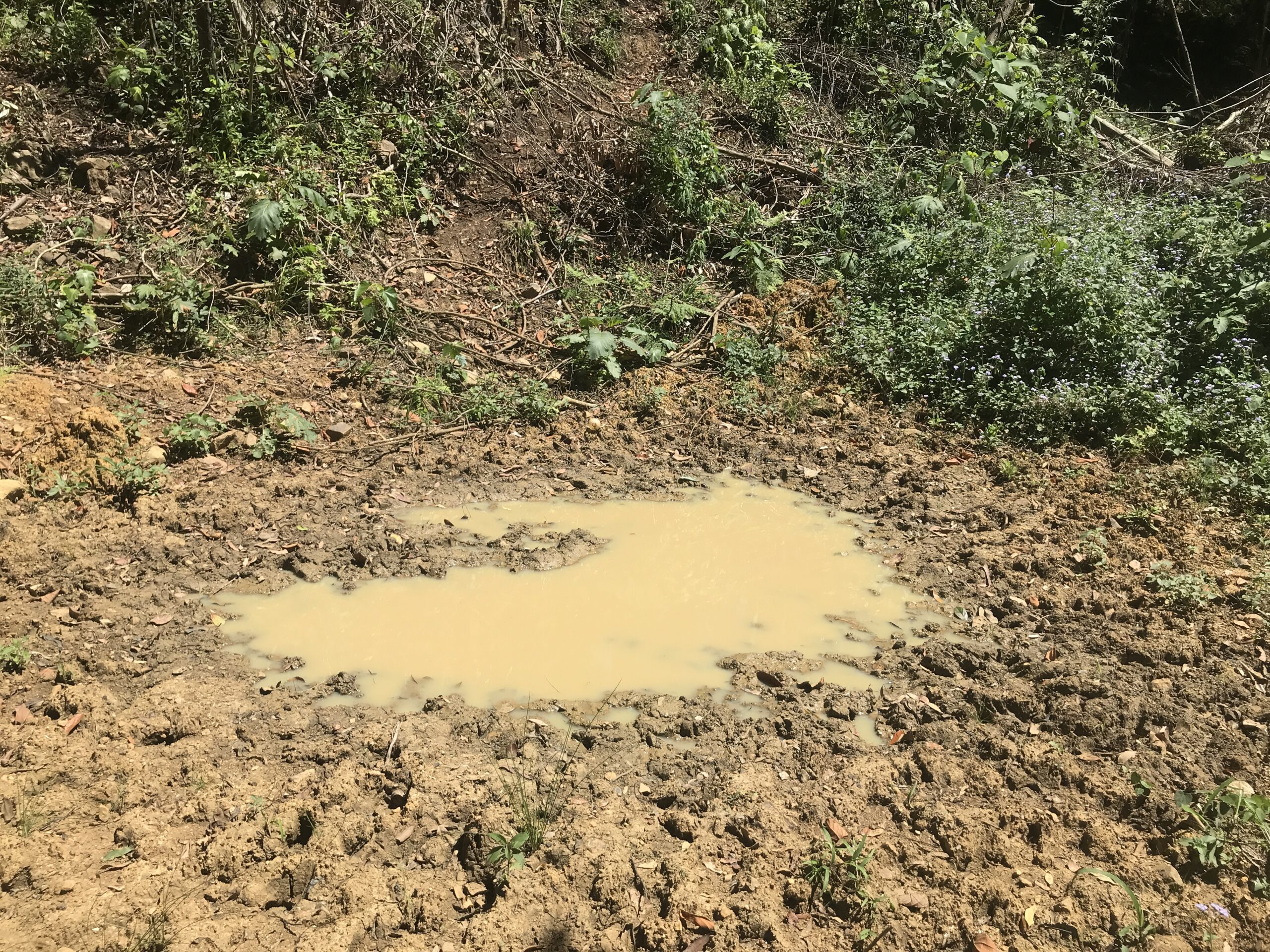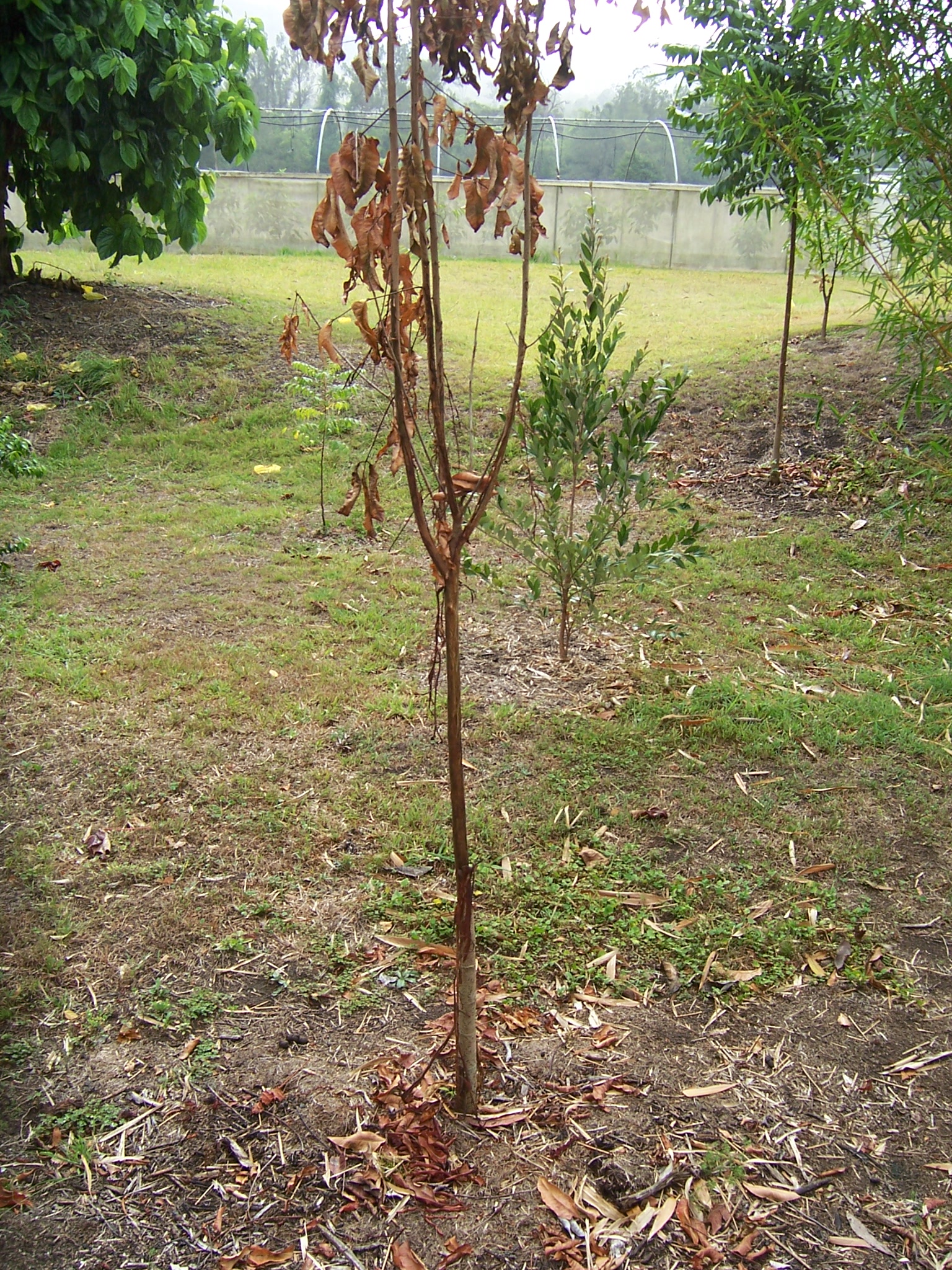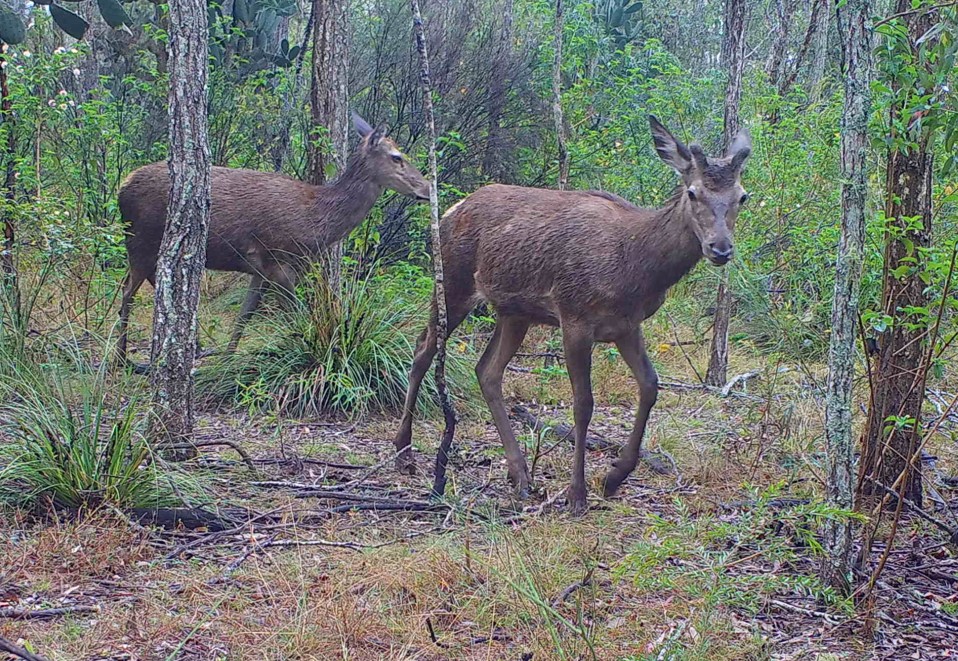Australia is home to six species of feral deer, with four species in SEQ – Red, Rusa, Fallow and Chital. Deer were introduced to Australia over several decades starting in the 1860s and their population continues to increase. The draft National Feral Deer Action Plan states that feral deer have almost doubled their range in the past 20 years. In 1980, there was an estimated 50,000 feral deer in Australia. It is now likely to be 1-2 million. This growth was probably spurred on by the release of farmed deer in the 1990s in response to the venison industry decline.

Like most feral animals, deer are tricky to control and cause grief for many Land for Wildlife members. Deer can damage trees, waterways and fences, and can encourage illegal hunters to trespass. This article gives a brief outline of some impacts of deer, which would be of no surprise to many readers, and also provides some tips from Land for Wildlife Officers.
Every year, male deer shed their old antlers and regrow new ones, larger than the ones the year before. They regularly scratch and rub their antlers on trees, especially during the rutting season. In addition, all deer have scent glands that they rub against trees to mark their territory. All of these actions can damage and kill trees and saplings.

Observations by some LfWSEQ Officers suggest that male deer seem to target saplings that are 2-3m high and about 50mm in diameter as this is the preferred stem size to rub velvet off antlers. This would be consistent with the size of Wild Tobacco trees discussed in the facing article. Unfortunately, this is also the time when landholders think that the tree is established, and then it gets ringbarked.
Due to their cloven hooves and wallowing in mud, deer can cause erosion and reduce water quality to creeks and wetlands. They browse on all vegetation within their reach including grasses, shrubs, vines and low hanging tree branches. Large deer populations can significantly reduce the shrub and groundcover layers, help disperse weeds into forests and can reduce the health of the whole ecosystem. Given deer are such extensive browsers, they compete with native macropods for food resources, especially after fires or in drought.
Feral deer also damage fences, create traffic hazards when they cross roads and they help spread diseases and parasites to domestic stock and pets. Deer can also become aggressive towards domestic animals, especially horses, during the rutting season.

All councils in SEQ have a biosecurity plan that outlines the management of invasive animals, including deer. Councils need to meet their legislative biosecurity obligations by controlling deer on council lands. For example, on the Gold Coast, the four feral deer species are considered by City of Gold Coast as containment species. This means that core deer populations are contained to keep risks low and outlying deer populations are targeted for eradication.
Most councils offer some deer management advice or control services to private landholders depending on the area and the scale of threat. Some landholders directly engage pest animal control businesses or recreational hunters to monitor and/or shoot deer to keep deer numbers at lower levels. Please note that recreational deer hunting on public lands (e.g. council reserves, State Forests, National Parks) is illegal in Queensland and that, by law, hunters need landholder’s permission to enter private lands to hunt.
Anecdotally, LfWSEQ Officers have found:
- Planting a couple of rows of spiky plants, such as Cockspur Thorn (Maclura cochinchinensis) around, or on the edges, of revegetation areas may deter deer from entering the planting site.
- Similar to above point, leave an edge of thick lantana around planting sites as it may act as a protective barrier.
- Deer seem to prefer to rub their antlers on Hoop Pines, so don’t plant these as a spiky deterrent.
- Not much will stop deer during drought – they will eat most plants.
- Tall tree guards with heavy duty mesh and star pickets should deter deer.
- Don’t plant in a known deer corridor or near a favoured deer watering hole or wallow area.
- There is limited feedback on commercially available ultrasonic deer deterrent devices so it is not clear whether they work or not.
- Scent-based deer deterrent products (either homemade or commercially available) would require regular re-application and are probably ineffective in the long-term.
If you have feral deer on your property, you may wish to report it to your local council or via the Feral Scan app/website (feralscan.org.au). Information collected by Feral Scan can then be used by pest animal controllers to track deer and help control them.
Article by Deborah Metters
Land for Wildlife Regional Coordinator
